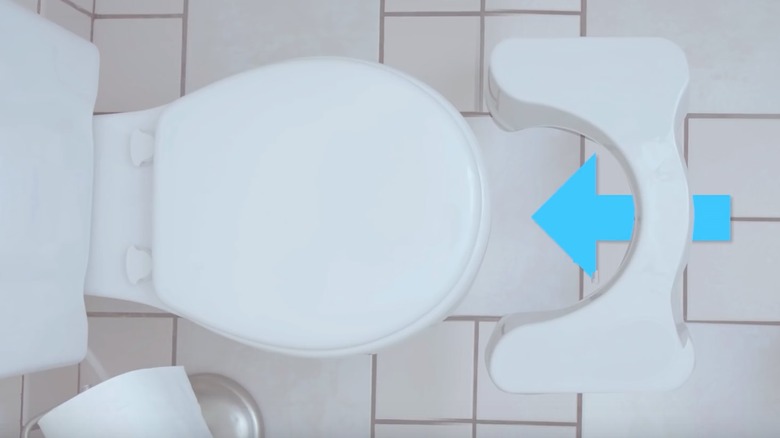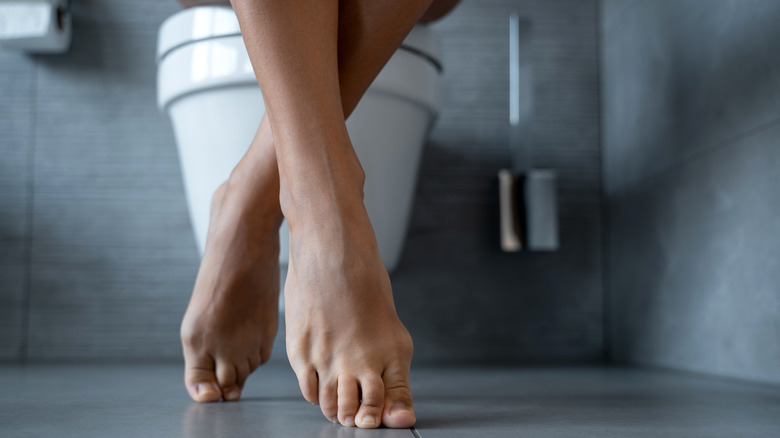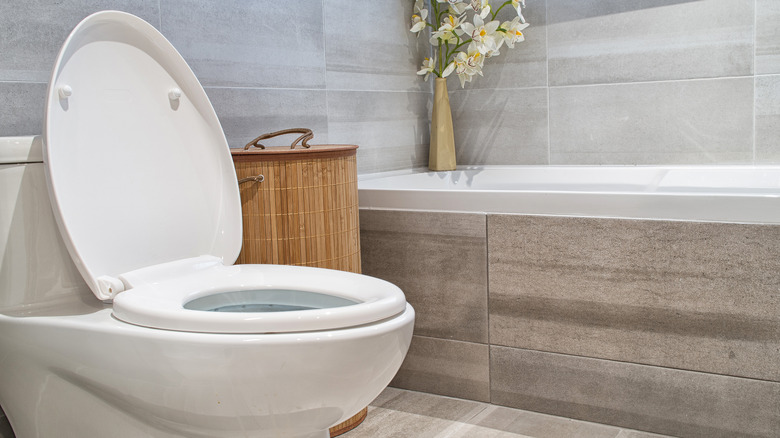Does The Squatty Potty Really Work As It Claims?
Thanks to an ingenious marketing YouTube video involving a potty-obsessed Prince Charming and a unicorn with issues, it didn't really take long for the Squatty Potty to make its way from being a cult favorite to a becoming a toilet accessory that the wider community could get behind. And although the Mayo Clinic is still in the midst of a wider study to determine whether what they call a "squat assist device" actually works to improve one's ability to poop, other doctors have come out to say that they've seen proof that the Squatty Potty isn't quite as silly as it might sound.
In a study published in the Journal of Clinical Gastroenterology, 52 medical residents and their partners were asked to take a survey about their toilet habits. Through the initial survey, researchers found that even if all the participants were healthy, a "significant number" had issues that included straining and "incomplete emptying." The participants were then all given Squatty Potties which, for the purposes of the study were called "defecation posture modification devices," and told to track their bowel movements for another two weeks.
Squatty Potty inventors may be onto something
Researchers say 90 percent of those surveyed and who used a Squatty Potty strained less, and 71 percent had faster movements. The improvements were most seen in men, and on anyone who said they had toilet related issues at the start of the survey. Two-thirds of those who took part in the study said they would continue to use the Squatty Potty (via Time).
This study seems to show that the Squatty Potty's inventors may be onto something. "From the rectum into the anus, there's kind of a bend, and [The Squatty Potty] gets us closer to how we're 'supposed' to have bowel movements," says Peter Stanich, assistant professor of gastroenterology at the Ohio State University Wexner Medical Center who was part of the study. He says unlike Western toilets, which put our bodies at a 90-degree angle, using a squatting device straightens that bend.
The Squatty Potty helps, but it isn't a must-have
Ashkan Farhadi, a California gastroenterologist, agrees. "The Squatty Potty does increase the rectal canal angle, from 100 degrees to 120 degrees. When we increase the angle, the rectum opens up. When we want to have a bowel movement, we open the angle," he tells Healthline.
But not everyone thinks the Squatty Potty is a must-have for anyone with bowel problems. "The act of having a bowel movement is very complex," says Tom McHorse, a gastroenterologist at Austin Regional Clinic. "It's much more than just the angle of the colon. The claim that sitting is unnatural is not a correct claim. In a small number of patients, this can be helpful, but the claim that we're not made to sit on the toilet isn't bound by scientific evidence." He says there are other factors to consider, like your diet, activity level, and overall health which have an impact on your toilet habits.
Stanich says devices like the Squatty Potty are good for both healthy people as well as those who might have problems like constipation and irritable bowel syndrome. The "squat assist device" can also help prevent problems that arise from straining, like hemorrhoids. But Stanich also says people should use devices like the Squatty Potty after they've made sure they don't suffer from any serious medical problems before propping their feet up next time they have to poop.


